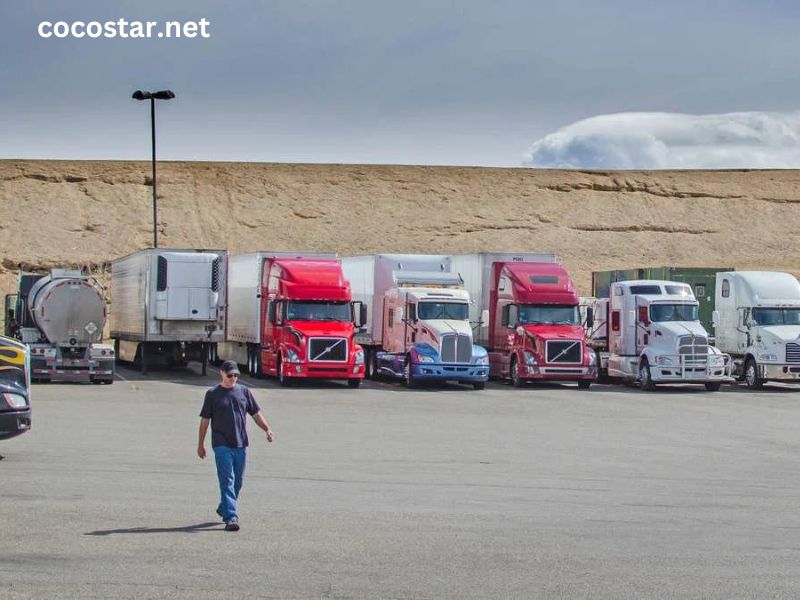Starting a truck stop business can be a lucrative venture, especially with the growing demand for trucker services across the country. Truck stops offer essential services such as fuel, food, and rest areas for truck drivers, making them a critical part of the transportation infrastructure. This comprehensive guide will walk you through the key steps to successfully start and run a truck stop business.
1. Understanding the Truck Stop Industry
Before diving into the specifics of starting a truck stop business, it’s essential to understand the industry. Truck stops are more than just fueling stations; they are comprehensive service centers designed to cater to the needs of long-haul truck drivers. They typically include:
- Fuel Stations: Diesel and gasoline pumps.
- Convenience Stores: Snacks, beverages, and trucker supplies.
- Restaurants: Dine-in and fast food options.
- Rest Areas: Sleeping facilities or parking areas.
- Maintenance Services: Basic repairs and tire services.
- Showers and Restrooms: Clean and well-maintained facilities.
Understanding the demand for these services in different regions will help you identify the best location for your truck stop.
2. Market Research and Planning
2.1 Conduct Market Research
Before starting your truck stop, conduct thorough market research to assess the demand for truck stops in your chosen area. Consider factors such as:
- Traffic Patterns: Analyze traffic reports to identify high-traffic routes frequented by truckers.
- Competitor Analysis: Study existing truck stops in the area to understand their services and pricing.
- Trucker Needs: Interview truck drivers to understand their needs and preferences.
2.2 Develop a Business Plan
A detailed business plan is crucial for any startup. Your plan should include:
- Executive Summary: An overview of your business concept, goals, and strategies.
- Market Analysis: Insights from your market research.
- Marketing Strategy: How you plan to attract and retain customers.
- Operations Plan: Daily operations, staffing, and service offerings.
- Financial Projections: Budget, funding requirements, and revenue forecasts.
3. Legal Requirements and Permits
3.1 Choose a Business Structure
Decide on the legal structure of your truck stop business. Common structures include sole proprietorship, partnership, LLC, and corporation. Each has its implications for taxes, liability, and management.
3.2 Obtain Necessary Licenses and Permits
You will need various licenses and permits to operate a truck stop. These may include:
- Business License: Required to legally operate your business.
- Zoning Permit: Ensures your location is zoned for commercial use.
- Health Department Permit: For food service areas to comply with health regulations.
- Environmental Permits: For fuel storage and disposal of waste.
- Signage Permit: If you plan to put up external signage.
Consult with a legal advisor to ensure you meet all local, state, and federal requirements.
4. Location and Facility
4.1 Choosing the Location
Selecting the right location is critical for a successful truck stop. Consider the following factors:
- Visibility and Accessibility: Ensure your truck stop is easily visible and accessible from major highways or truck routes.
- Proximity to Other Services: Being near other services, such as repair shops or lodging, can attract more customers.
- Land Size: Ensure you have ample space for fueling stations, parking, and other amenities.
4.2 Designing the Facility
Design your truck stop to maximize efficiency and customer satisfaction. Key design elements include:
- Fuel Pumps: Multiple pumps to minimize wait times.
- Convenience Store Layout: Well-organized and stocked with essential items.
- Restaurant Space: Comfortable seating and efficient service areas.
- Rest Area: Safe and clean resting spots for truck drivers.
- Maintenance Area: Space for basic repairs and tire services.
Work with architects and designers experienced in truck stop facilities to create an effective layout.
5. Securing Financing
5.1 Assess Your Funding Needs
Determine how much capital you need to start your truck stop business. This includes costs for land, construction, equipment, inventory, and initial operating expenses.
5.2 Explore Financing Options
Consider various financing options, such as:
- Personal Savings: Use your own savings to fund the startup.
- Bank Loans: Traditional loans from banks or credit unions.
- Investors: Seek out investors interested in funding your business.
- Grants and Subsidies: Look for government grants or subsidies for small businesses.
Prepare a solid business plan and financial projections to present to potential lenders or investors.
6. Building and Equipping Your Truck Stop
6.1 Construction and Renovation
Once you secure funding, start the construction or renovation of your truck stop. Ensure that the facility meets all building codes and safety regulations. Regularly inspect the construction progress to stay on schedule and within budget.
6.2 Equipping the Facility
Equip your truck stop with the necessary tools and inventory, including:
- Fuel Pumps and Tanks: Install and maintain high-quality fuel dispensing equipment.
- Retail Equipment: Shelving, registers, and point-of-sale systems for the convenience store.
- Restaurant Appliances: Cooking and food preparation equipment for the restaurant.
- Maintenance Tools: Basic repair tools and equipment for the maintenance area.
- Restroom and Shower Facilities: Ensure cleanliness and functionality.
7. Hiring and Training Staff
7.1 Hiring Staff
Hire employees with experience in retail, food service, and customer service. Key positions include:
- Store Managers: Oversee daily operations and staff.
- Cashiers: Handle transactions and assist customers.
- Cooks and Food Service Workers: Prepare and serve food.
- Maintenance Technicians: Perform basic repairs and maintenance.
7.2 Training
Provide comprehensive training for your staff to ensure high-quality service. Focus on:
- Customer Service: Train employees to interact professionally and efficiently with truck drivers and other customers.
- Safety Procedures: Ensure staff are aware of safety protocols and emergency procedures.
- Operational Procedures: Teach staff how to operate equipment, handle transactions, and maintain cleanliness.
8. Marketing and Promotion
8.1 Branding and Advertising
Create a strong brand identity for your truck stop, including a memorable name, logo, and signage. Use various advertising channels to promote your business:
- Online Marketing: Utilize social media, a business website, and online directories.
- Local Advertising: Place ads in local newspapers, radio stations, and trucker magazines.
- Partnerships: Collaborate with trucking companies and organizations to increase visibility.
8.2 Customer Retention
Implement loyalty programs, discounts, or promotions to attract repeat customers. Consider offering amenities such as Wi-Fi, trucker lounges, or vehicle washing services to enhance customer satisfaction.
9. Operations and Management
9.1 Daily Operations
Manage daily operations efficiently by:
- Monitoring Inventory: Regularly check stock levels and reorder supplies as needed.
- Maintaining Equipment: Perform routine maintenance on fuel pumps, appliances, and other equipment.
- Customer Service: Ensure staff are attentive and responsive to customer needs.
9.2 Financial Management
Keep accurate financial records and monitor your business’s financial performance. Use accounting software or hire an accountant to manage:
- Revenue and Expenses: Track income, expenses, and profitability.
- Payroll: Manage employee salaries and benefits.
- Taxes: Ensure timely payment of taxes and compliance with tax regulations.
10. Compliance and Safety
10.1 Health and Safety Compliance
Adhere to health and safety regulations, including:
- Food Safety: Follow guidelines for food storage, preparation, and handling.
- Fuel Safety: Comply with regulations for fuel storage and dispensing.
- Workplace Safety: Ensure a safe working environment for employees.
10.2 Environmental Compliance
Implement eco-friendly practices and comply with environmental regulations:
- Waste Management: Properly dispose of waste and recycle when possible.
- Energy Efficiency: Use energy-efficient lighting and equipment.
Conclusion
Starting a truck stop business requires careful planning, investment, and management. By understanding the industry, conducting thorough market research, and following the steps outlined in this guide, you can establish a successful truck stop that meets the needs of truck drivers and becomes a valuable part of the transportation network. With dedication and strategic planning, your truck stop business can thrive and grow in a competitive market.



